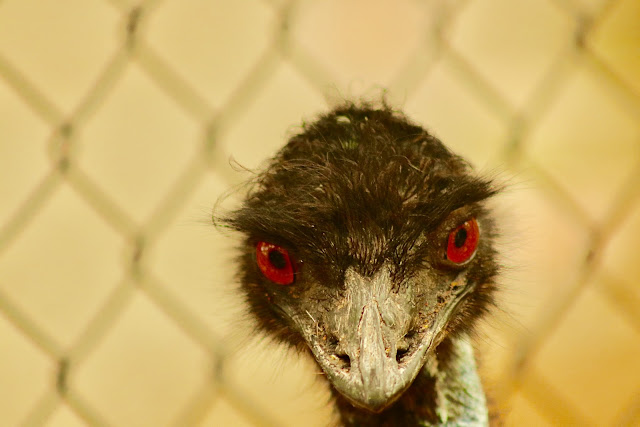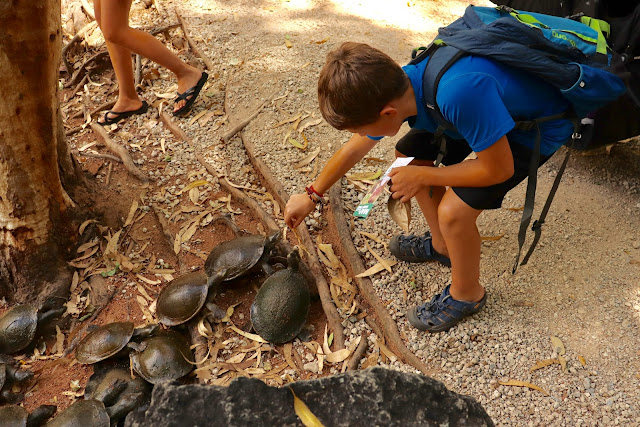Over the 8 moths we've spent abroad we have seen a lot of citys. Bejiing, Tokyo, Seoul, Kathmadu, Bangkok, Phenom Penh, Ho Chi Minh, Darwin. Plus all the cities we have visited before, New York, Chicago, Montreal, Quebec, Cusco, LA, Bogata. I have to say in my opinion Brisbane has been the nicest and cleanest so far. The parks were neat and large and there are many opportunities for walkers and joggers. There was a very modern feel too.
Driving wasn't too bad and finding parking downtown wasn't hard. We walked through the beautiful parks to the public pools with sand and everything. Justin walked around the neighborhood while the rest of us swam. When I floated on my back there was a great view of the skyline. After Nick and I were satisfied with our swimming we went out to a fancy lunch. Munching on salmon and burgers surrounded by flowers was a big step up from canned meat in the bush!
We walked around the park some more and rode the Ferris Wheel for panoramic views of the city.
Then we saw the iconic Brisbane sign.
And spent a few hours at an art museum. Nick was bored and made the museum staff a little nervous. There was modern art as well as a Picasso.
Everyone was tired by the time the museum closed and we were dismissed. Traffic was a little heavier exiting the city because it was rush hour but Justin was a good driver and got us out of it. We spent the night in Mermaid Beach a few miles out of town.
We walked around the park some more and rode the Ferris Wheel for panoramic views of the city.
Then we saw the iconic Brisbane sign.
And spent a few hours at an art museum. Nick was bored and made the museum staff a little nervous. There was modern art as well as a Picasso.
Everyone was tired by the time the museum closed and we were dismissed. Traffic was a little heavier exiting the city because it was rush hour but Justin was a good driver and got us out of it. We spent the night in Mermaid Beach a few miles out of town.

















































